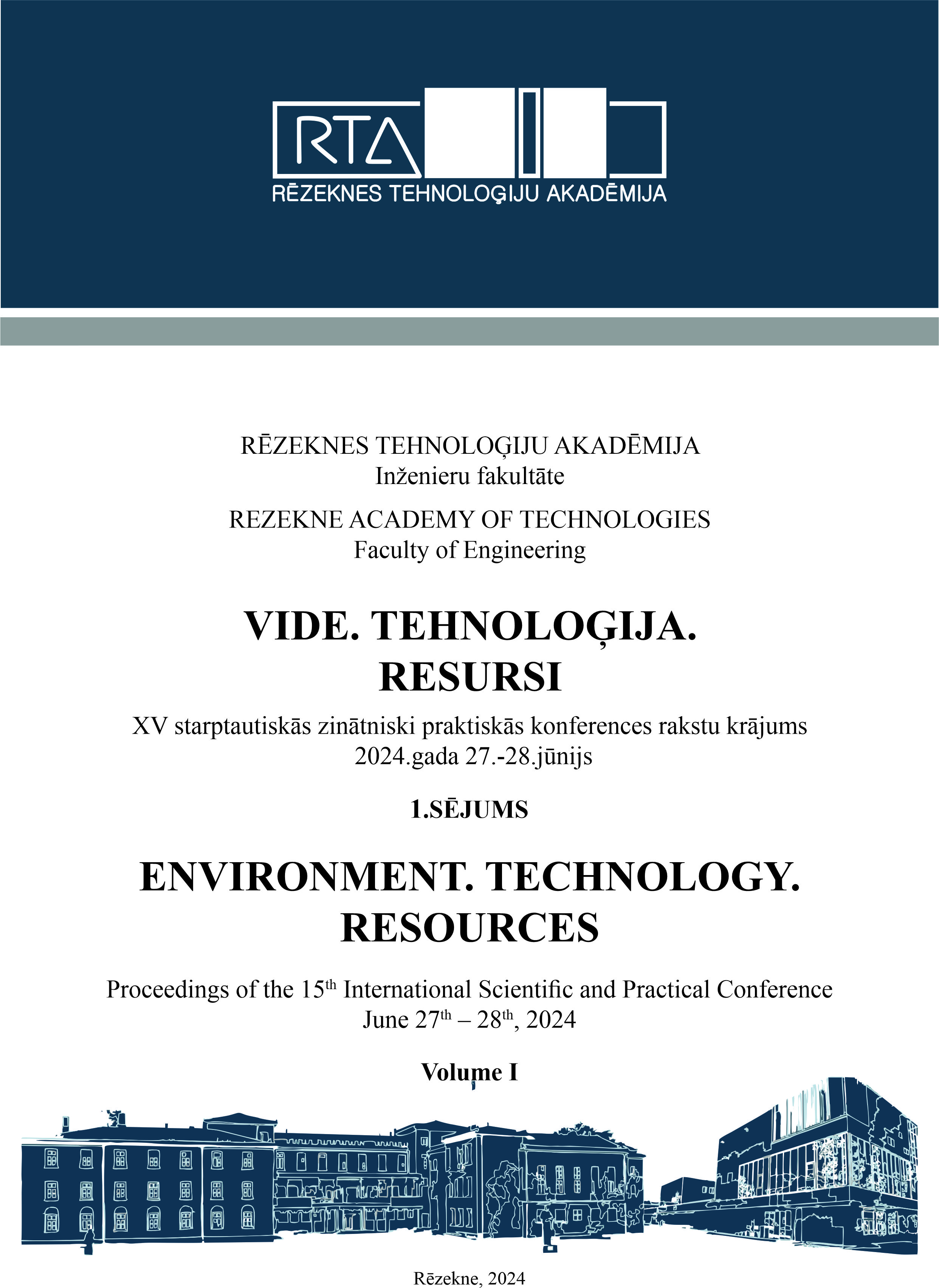SOME ASPECTS OF THE WATER CRISIS IN BULGARIA
DOI:
https://doi.org/10.17770/etr2024vol1.7972Keywords:
households, water crisis, water supplyAbstract
The failure of providing reliable water supply with standard water quality to the households is seen as a specific aspect of the water crisis. In this study, the drinking water supply of the households in Northeastern region of Bulgaria (Varna, Shumen, Dobrich, and Targovishte districts) for the period 2010-2021 was studied and analysed. During the studied period, the relative share of population affected by lack of drinking water supply for over 180 days per year varies between 0.0% in 2011 to 0.7% in 2020 of the total percentage of affected population on national scale. For Varna and Dobrich districts, the share of the affected population from prolonged interruptions in the water supply does not exceed 1%. The most severely affected is the Targovishte district’s population, where between 8.8% in 2010 and 24.3% in 2020 experience water supply regime with long, regular interruptions of water supply. In the municipality of Omurtag, approximately 80% of the population does not receive continuous water supply. Households in some of the villages in this municipality receive regulated water supply once every 480 hours. Based on the analysis, settlements with a regime of water supply and poor drinking water quality were identified, as well as the time intervals of supply interruption for the period studied. The main reasons for the manifestations of this specific aspect of the water crisis in Northeastern region of Bulgaria were identified. The shortage of water and the inability to provide households with the necessary water quantities with the required quality confronts Bulgaria with an ever-growing problem, the solution of which requires a complex institutional response, including from the water supply and sewerage sector.
References
UNDP, United Nations Development Programme: User’s Guide on Assessing Water Governance for AUTHORS: M. Jacobson, F. Meyer, I. Oia, P. Reddy, H. Tropp, EDITORS: M. Jacobson, A. Wilde, proofread by Lois Jensen, Phoenix Design Aid, Denmark, 2013.
J. Allan : The Middle East Water Question: Hydropolitics and the global economy, King’s College London Water Research Group, 2001.
United Nations Children’s Fund and the World Health Organization, “ Progress on Drinking Water and Sanitation ” , UNICEF, 2012. [Online]. Available: https://data.unicef.org/resources/progress-on-drinking-water-and-sanitation-2012-update/ [Accessed: Feb. 01, 2024].
S. Song , S. Wang1 , X. Wu , Y. Wei , G. Cumming, Y. Qin, X. Wu, B. Fu: "Identifying Regime Transitions for Water Governance in the Yellow River Basin, China", 2023. [Accessed: Feb. 02, 2024]. https://doi.org/10.1029/2022WR033819
A. Azis, M. Alfarizi: "Europe’s Water Crisis: From Overshadowed to Potentially Catastrophic", Available: European Journal of Development Studies, May 01, 2023. [Accessed: Feb. 02, 2024]. https://www.ej-develop.org/index.php/ejdevelop/article/view/249
M. Jena,S. Mishra, H. Moharana: "Water Sustainability Initiatives to Meet the Water Crisis in India", Journal of Chemical Engineering Research Updates, 2023, 18-30, DOI: https://doi.org/10.15377/2409-983X.2023.10.2. Accessed: Feb. 02, 2024].
C. Mercante, M. Moraes, J. Osti, "The global water crisis: Be the change you want to see in the world", DOI: https://doi.org/10.56238/chaandieducasc-034, 2023. [Accessed: Feb. 02, 2024].
A.Atanasov, A. Bankova, G. Zhecheva: "Observation of the vegetation processes of agricultural crops using small unmanned aerial vehicles in Dobrudja region", Bulgarian Journal of Agricultural Science, 29 (No 1), pp. 176–181, 2023.
A.Atanasov, A. Bankova, G. Zhecheva: "Vegetation data processes, registered by remote sensing with a small aerial vehicle", Bulgarian Journal of Agricultural Science, 29 (No 3) 2023, pp. 564–569, 2023.
National Statistical Institute [Online]. Available: https://www.nsi.bg/en/content/2625/population-and-water-services-total-country-statistical-region-districts-and-river-basin-district [Accessed: Feb. 3, 2024].
D. Toneva, D. Dimitrova, “An overview of water consumption in Bulgaria,” Announcements of Union of Scientists Sliven, vol. 38 (2), pp.81-87, 2023.
Regional Health Inspection, “Report on the quality of drinking water in the trade district for 2019”, 2019.
Technical infrastructure - Regional Administration чTargovishte. [Online]. Available: https://tg.government.bg/page.php?22 [Accessed: Jan. 21, 2024].
Basin Directorate Black Sea Region, " Register of resources and balance of underground water bodies ". [Online]. Available: https://www.bsbd.org/registri/%D1%80%D0%B5%D1%81%D1%83%D1%80%D1%81%D0%B8%20%D0%B8%20%D0%B1%D0%B0%D0%BB%D0%B0%D0%BD%D1%81%202023.pdf/ [Accessed Feb. 21, 2024].
VIK - Targovishte - detailed reference for settlements with water supply regime, deteriorated quality of drinking water and floods, table VIK - Targovishte, Water Supply and Sewerage Ltd. - Targovishte - VIK - [Online]. Available: http://viktg.com/info/info?tid=15&&id=53&&idc=72 [Accessed Feb 21, 2024].
Order No.9 of March 16, 2001 on quality of water intended for drinking and domestic purposes, March 16, 2001. [Online]. Available: Naredba H-4.pdf https://lex.bg/laws/ldoc/-549175806 [Accessed Feb 3, 2024]. Regional Health Inspection, “Report on the quality of drinking water in the trade district for 2021”, Regional Health Inspection, 2021. [Online]. Available: https://view.officeapps.live.com/op/view.aspx?src=https%3A%2F%2Frzi-targovishte.bg%2Fdoc%2FD_voda_2021.docx&wdOrigin=BROWSELINK. [Accessed: Feb. 2, 2024]
Downloads
Published
Issue
Section
License
Copyright (c) 2024 Daniela Toneva, Desislava Dimitrova

This work is licensed under a Creative Commons Attribution 4.0 International License.



